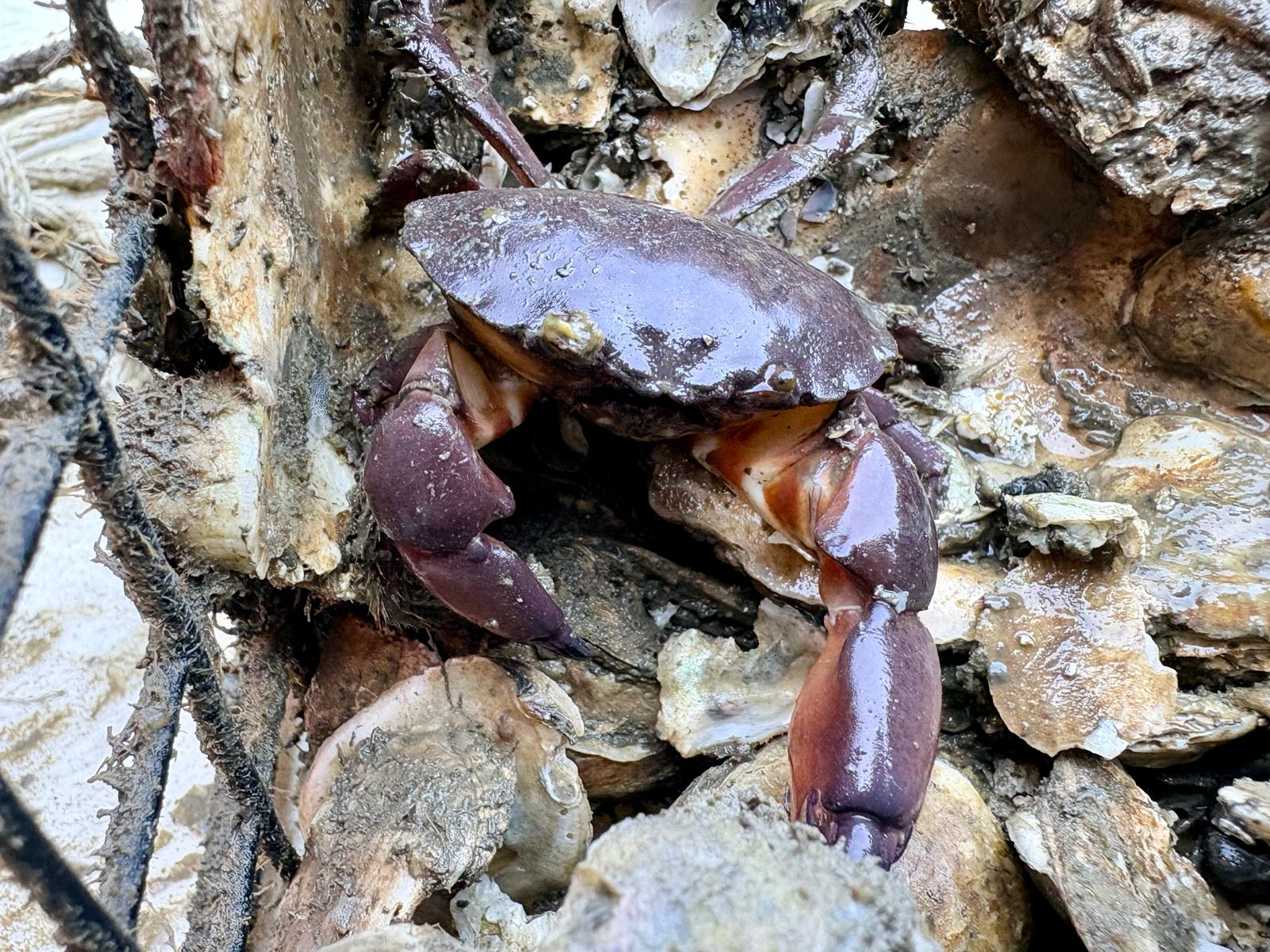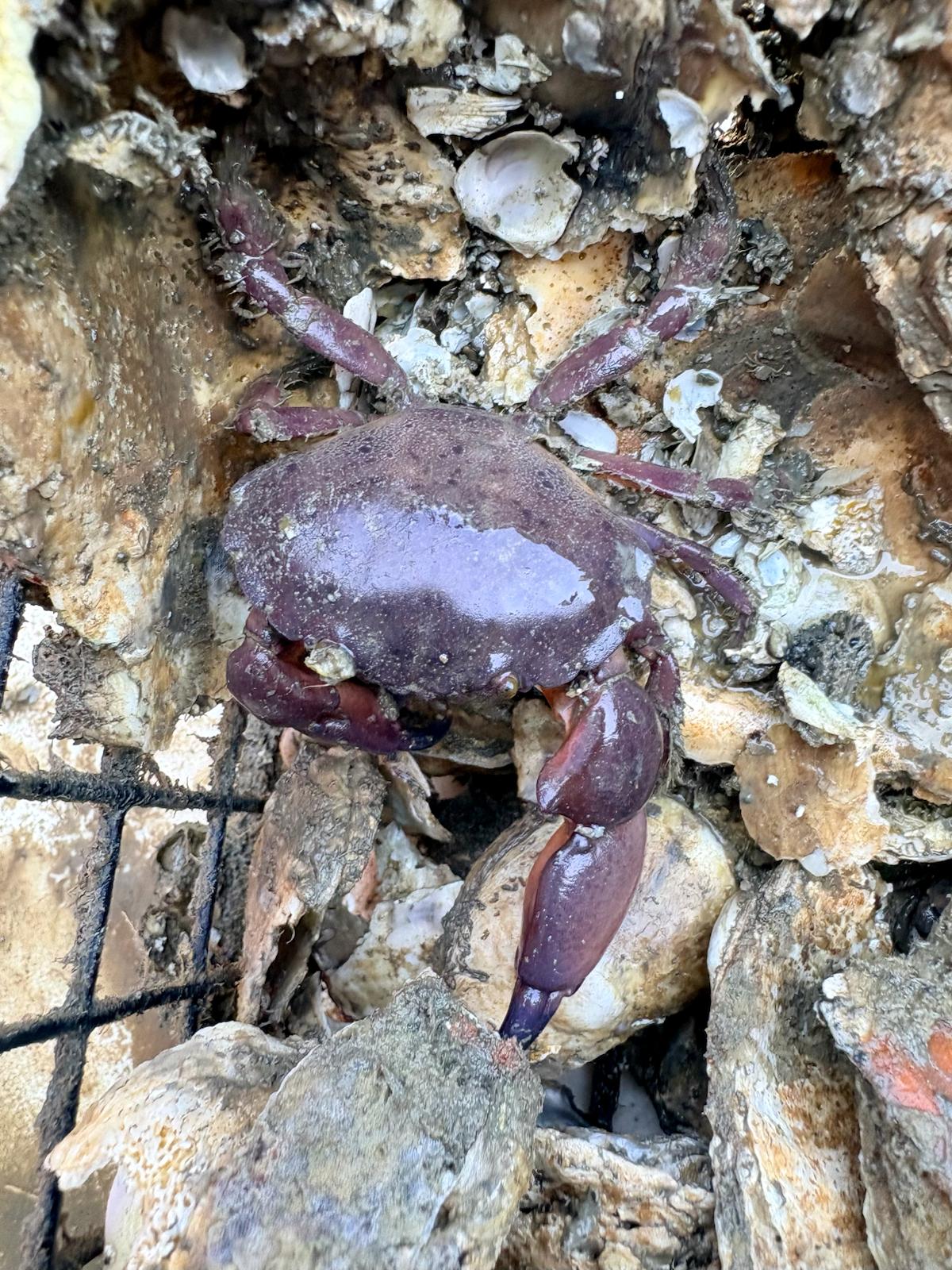
By Mary Reid Barrow
Photos by Cristin Pullman
LRNow welcomed a stone crab to the Lynnhaven River last week!
The critter, whose relatives, until very recently, were denizens of more southern waters, showed up in a spat cage turned into LRNow during the fall cage collection, said Community Outreach Manager Cristin Pullman.
Stone crabs appear to be moving into Virginia waters after being found off Norfolk’s Willoughby Spit and in the Elizabeth River, Cristin explained.
The stone crab was found in a LRNow spat cage in the Bay Island/Long Creek area of the Lynnhaven. It was about the size of Cristin’s palm.

The critter may have been attracted as a youngster to the little eco-system that develops in the cages that LRNow volunteers hang from their docks. The cages are stocked with shell to attract free-swimming baby oysters, as spat are called, to monitor oyster production in the Lynnhaven River.
Besides appearing almost purple, the crab was bigger than some of the big mud crabs that also are found hiding in some of the cages, Cristin said.
Cristin and LRNow Oyster Restoration Manager Brent James wondered right away if the unusual looking crab was a stone crab. They had read several articles about this southern species found recently in Virginia waters. Cristin contacted Rom Lipcius of the Virginia Institute of Marine Science in Gloucester who is studying the newcomer. He confirmed the find.
“He was very excited,” Cristin said.
“Near piers, docks and oyster reefs are where they are most often found,” Cristin added, “not so much on beaches and mudflats where you might see mud crabs.”
Chunky stone crabs don’t look like blue crabs at all, but they can be confused with common Atlantic mud crabs, because they have a similar brownish colors, said Cristin. Rom said the former tend to be larger, up to 6.5 inches across, versus about 2.5 inches for mud crabs.
In addition, stone crabs also have pale horizontal stripes on their legs and prominent black claw tips, Cristin said.
Brent is putting the word out to watermen to keep a lookout for the newcomers in their crab pots and oyster cages. And not only those of you with spat cages off your docks, but also those who have crab pots, keep your eyes open for our newcomers.
If you see what you think is a stone crab in one of your cages, take a photo but let the crab remain in the cage and don’t let it go. Send your photo to: Rom@vims.edu. Or if you are unsure and would rather, you can send info to Cristin: Cristin@lrnow.org
To read more on the arrival of this species here in Virginia, read these articles from the Virginian Pilot: (https://www.pilotonline.com/2025/08/27/stone-crabs-are-calling-virginia-waters-home-for-the-first-time-ever/) and from WHRO:(https://www.whro.org/environment/2025-08-26/stone-crabs-documented-in-virginia-waters-for-the-first-time)